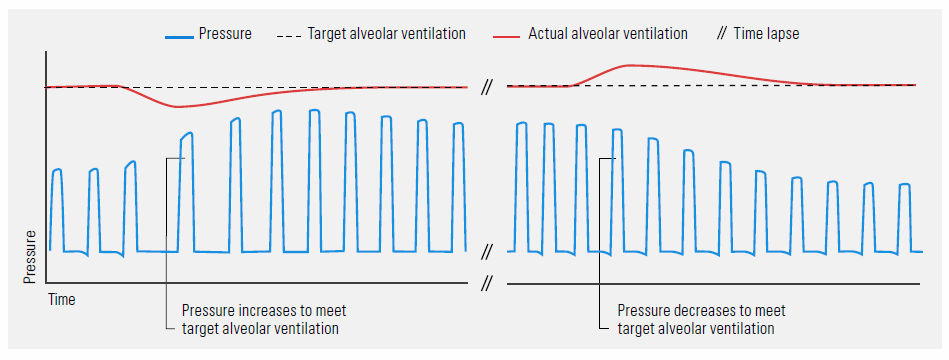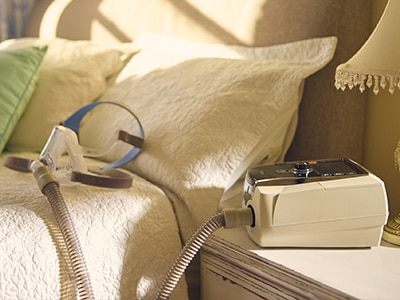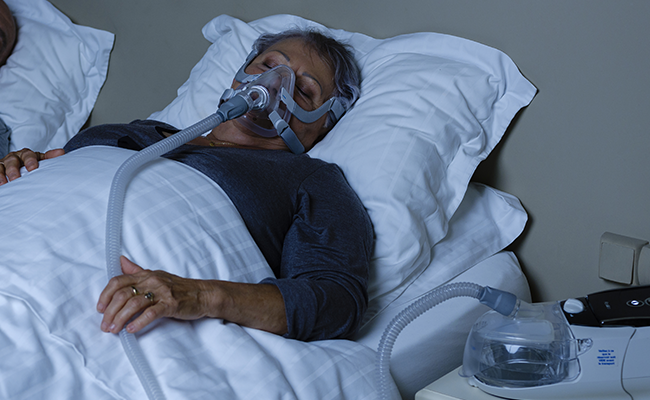![]()
What’s the problem?
Changes in airway resistance, body position, sleep stages and atrophy of the respiratory muscles can compromise your patient’s ventilation.
![]()
What does iVAPS do?
iVAPS* is designed to maintain alveolar minute ventilation at a pre-set target level. Alveolar ventilation was chosen because gas exchange occurs at the alveoli level. This makes it particularly suitable for adults with chronic respiratory failure whose condition and ventilation needs are likely to change. Conventional pressure support modes target total tidal volume or minute ventilation.
How does it work?
- iVAPS improves ventilation by regulating alveolar ventilation to a pre-set target while taking account of tidal volumes, respiratory rates and the anatomical dead space in your patient’s airways.
- iVAPS is an automated mode. It rapidly and gently maintains your patient’s unique alveolar ventilation target and stabilises blood gases by adapting the delivered ventilation to maintain stable breathing, even when your patient’s ventilatory needs change and without affecting sleep quality.1
- iVAPS is designed to make NIV setup less complex and time-consuming for clinicians. The device calculates an appropriate alveolar ventilation value if the clinician enters the required patient values (height, target patient rate and one of tidal volume, minute ventilation or Vt/kg). Alternatively, the Learn Targets feature uses a short recording of the patient’s breathing to automatically define suitable respiratory rate and alveolar ventilation values.

Download the iVAPS card
Keen to keep this information handy? Download a print-friendly version.
Keep Exploring

ResMed Academy Online
ResMed Academy Online is designed to provide healthcare professionals with easy access to a variety of learning resources.

Ventilation machines
Whether your patient needs mechanical ventilation at home, in hospital or on the move, our versatile ventilation devices provide effective therapy for a wide range of respiratory conditions.

Technical support
Our team of experts work to answer your technical questions relating to ResMed sleep and respiratory devices and software.
References
*iVAPS mode is available in Lumis 150 ST, Lumis 150 ST-A, Stellar 150 and all Astral variants. iVAPS therapy mode is indicated for patient weighing 30kg and above.
- Nilius G, Katamadze N, Domanski U, Schroeder M, Franke KJ. Non-invasive ventilation with intelligent volume-assured pressure support versus pressure-controlled ventilation: Effects on the respiratory event rate and sleep quality in COPD with chronic hypercapnia. International Journal of COPD. 2017;12:1039-45.
This content is intended for health professionals only. Please refer to the user and clinical guides for relevant information related to any contraindications, warnings and precautions to be considered before and during use of the products.
Update: 03/2024

